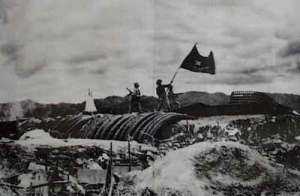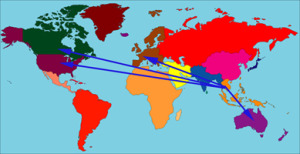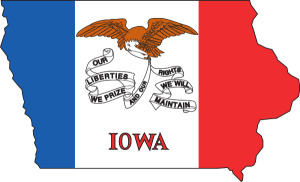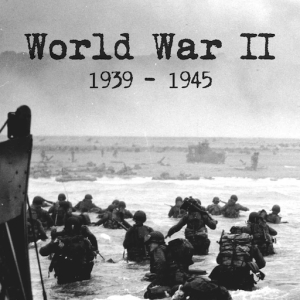In November of 1952, to protect the lives of top personnel in the Tai government, many high officers, administrators and their families were evacuated to Hanoi. At that time, Hanoi was still under French domination. Months later, they were joined by some Tai military and their families. They stayed in Hanoi for two years – two years full of anxiety and homesickness.
 In the meantime, fighting continued in the Tai Federation. One of the bloodiest battles was the now famous “Battle of Dien Bien Phu.” Dien Bien Phu was a name given by the Vietnamese to one of the Tai cities, Muong Theng, which means “the arena of gods.” It was one of the Tai people’s most respected cities.
In the meantime, fighting continued in the Tai Federation. One of the bloodiest battles was the now famous “Battle of Dien Bien Phu.” Dien Bien Phu was a name given by the Vietnamese to one of the Tai cities, Muong Theng, which means “the arena of gods.” It was one of the Tai people’s most respected cities.
Finally, on May 7 of 1954, came the Vietnamese victory at the battle of Dien Bien Phu, and French colonization in Indochina ended at the Geneva Conference in July of 1954. At that conference, North and South Vietnams were created – the North belonging to communist and the South to non-communist Vietnamese.
Exodus
The Tai people in Hanoi, less than 1% of the total population, became refugees overnight. Afraid of persecution, they fled to South Vietnam and Laos in July of 1954. After twenty years in Laos, almost all Tai people had re-established their lives, built houses, found jobs, and even owned garden plots.
Then came more unexpected events – the fall of the Indochina countries to the communists in 1975: Cambodia and South Vietnam in April and Laos in December.
 Again, the Tai refugees in Laos had to leave their homes, properties, belongings, jobs, and friends for an uncertain future. Thousands of Tai people crossed the Mekong River into refugee camps in Thailand. From there, most went to France and the United States. Some Tai went to Australia, Europe, and Canada.
Again, the Tai refugees in Laos had to leave their homes, properties, belongings, jobs, and friends for an uncertain future. Thousands of Tai people crossed the Mekong River into refugee camps in Thailand. From there, most went to France and the United States. Some Tai went to Australia, Europe, and Canada.
New Beginnings
The Tai refugees who resettled in the United States came to the State of Iowa, where they have remained and have been able to live together, help each other, and preserve their rich culture and identity. They have often expressed their eternal appreciation to their benefactors: President Gerald R. Ford, Governor Robert D. Ray, and all Iowans for welcoming them in a special way.
 Now they are here, in a new place, a new country – a country of great opportunity, democracy, and freedom. Eighty percent (8,000) of the Tai people living in the United States prefer to live and unite in the State of Iowa.
Now they are here, in a new place, a new country – a country of great opportunity, democracy, and freedom. Eighty percent (8,000) of the Tai people living in the United States prefer to live and unite in the State of Iowa.
In another corner of the world, ten of thousand miles from America, two million people known as “Tai” still live in Northwest Vietnam.
Northwest of Vietnam
After the defeat of Dien Bien Phu Battle in 1954, the newly created Tai Federation was absorbed by North Vietnam, and changed to the “Tai-Meo Autonomous Zone” of Vietnam in May 7 of 1955. Seven years later, in 1962, the “Tai-Meo Autonomous Zone” was changed to the “Northwest Autonomous Zone” of Vietnam. Finally, in October of 1975, the “Northwest Autonomous Zone” was abolished and simply named Northwest of Vietnam.
 The birthplace of the current generation of Tai people lies in four Northwestern provinces of Vietnam – Lai Chau, Son La, Lao Cai, and Yen Bai. This region was once called “Sip Song Chau Tai” or the Twelve Tai Principalities. The Tai people simply call it “Muong Tai” or the “Tai Country”. Most of the French books and documentaries refer it as “Pays Thai” or the Tai Country.
The birthplace of the current generation of Tai people lies in four Northwestern provinces of Vietnam – Lai Chau, Son La, Lao Cai, and Yen Bai. This region was once called “Sip Song Chau Tai” or the Twelve Tai Principalities. The Tai people simply call it “Muong Tai” or the “Tai Country”. Most of the French books and documentaries refer it as “Pays Thai” or the Tai Country.





